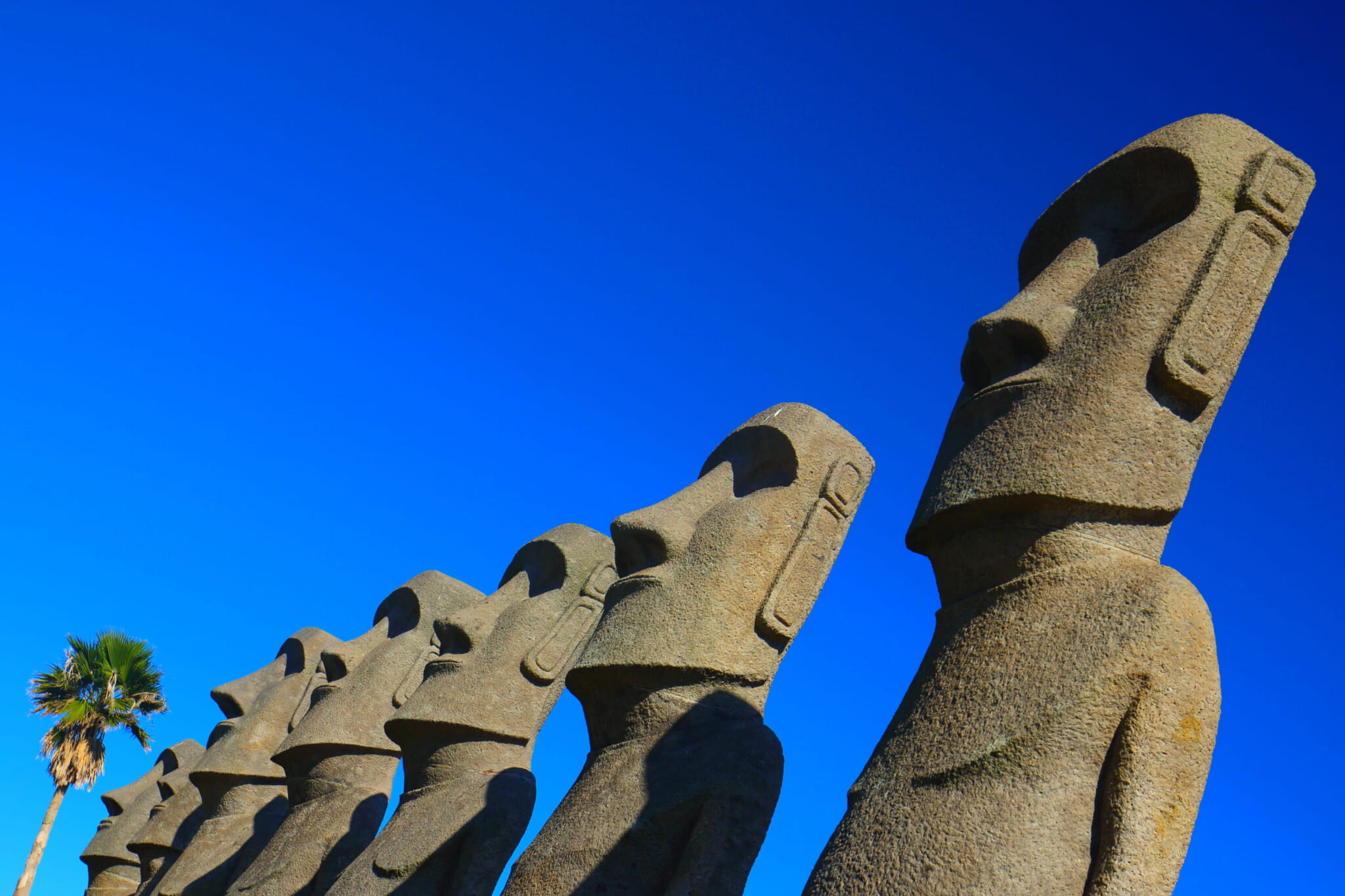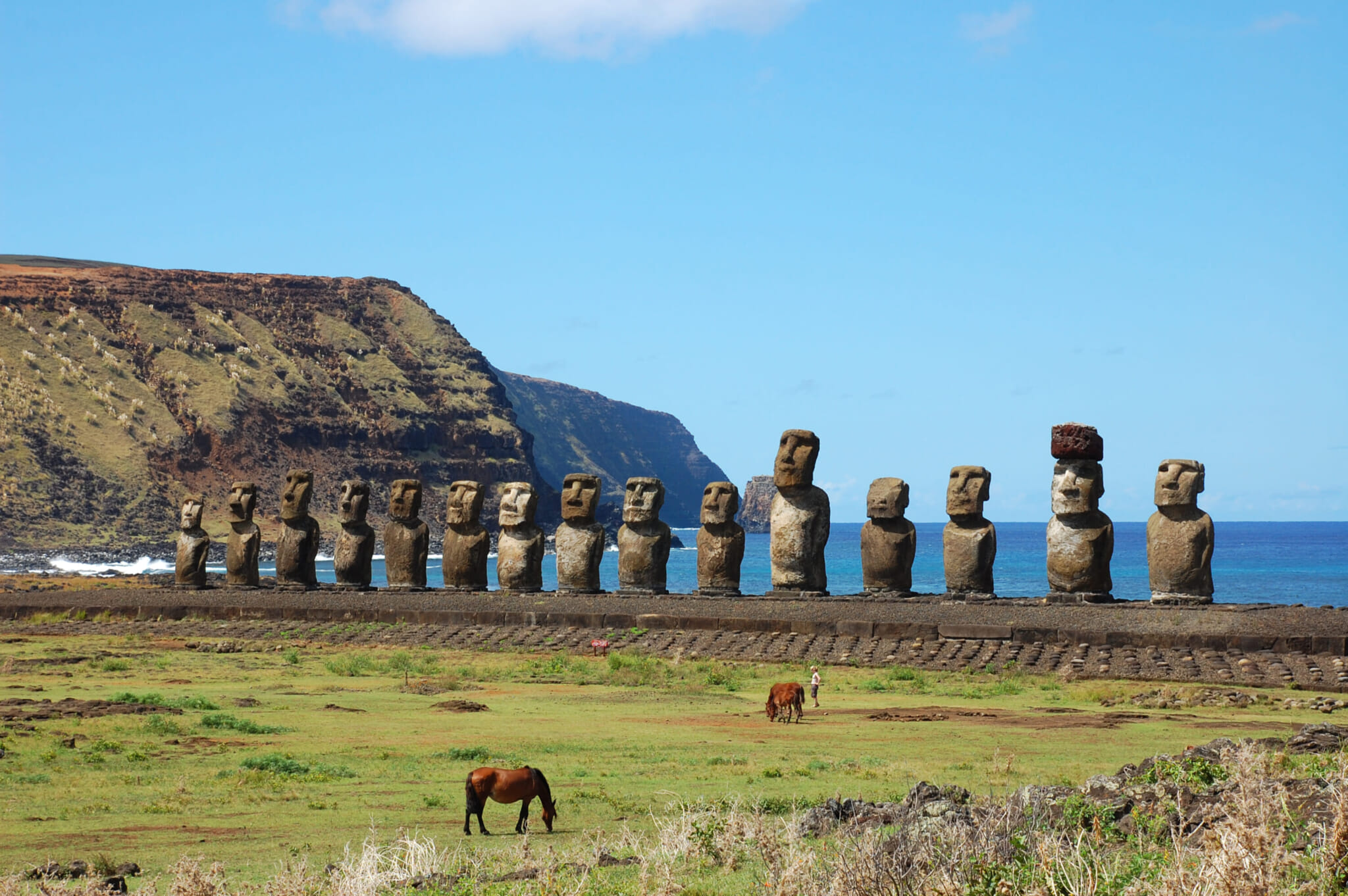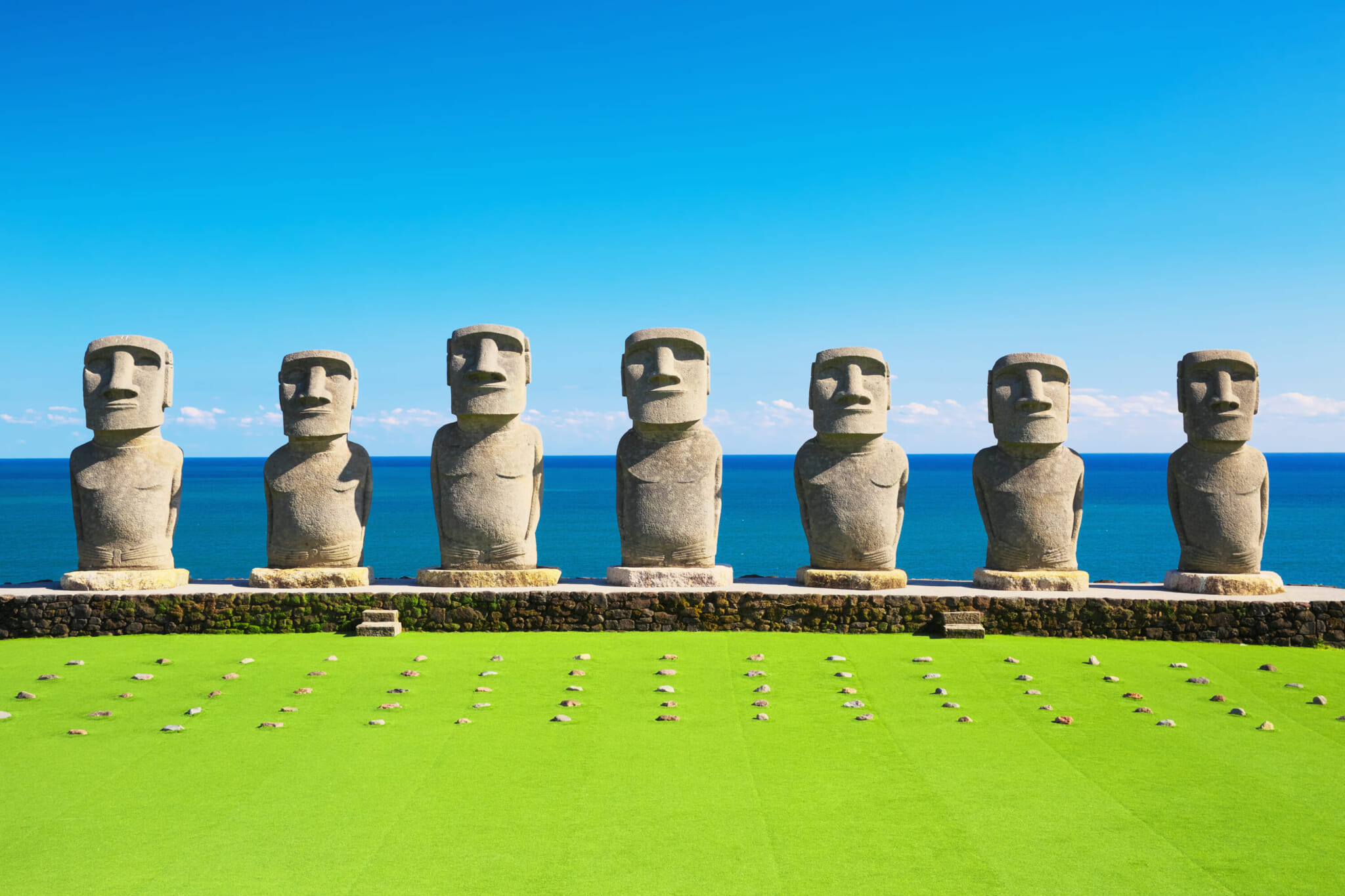Home to succulent mangoes and idyllic beaches, Miyazaki Prefecture lies on the eastern coast of Kyushu and is known for its abundant natural beauty. Nestled among its shrines and palm-fringed shorelines sits a sight that may at first seem out of place: In Sun Messe park, along the Nichinan coastline, you can find seven giant stone busts with deep-set eyes and long noses. Over 5 meters tall, and weighing a colossal 18 tons, these enormous statues stand firm amid the teal waters that spill into the Pacific Ocean.
If you’re familiar with the landscape of Chile’s Easter Island, you might recognize these monolithic figures. The statues that gaze out from the Nichinan coast are the kinfolk of the moai statues in eastern Polynesia, carved by the Rapa Nui people somewhere between the years 1100 and 1650. While replicas of the moai statues can be found all over the world, the ones in Sun Messe Nichinan are said to be the only reproductions sanctioned by the Easter Island authorities. Some 13,000 kilometers away, what could possibly link Miyazaki Prefecture with one of the most remote locations on Earth?

The moai at Sun Messe Nichinan
The History of Miyazaki’s Giant Moai
The story is one rooted in tragedy. In 1960, the most powerful earthquake ever recorded — measuring 9.5 on the Richter scale — struck southern Chile, causing immeasurable damage across the country and taking the lives of many. The earthquake’s force also triggered a tsunami, impacting lands as distant as New Zealand, Japan and the Philippines. Chile’s Ahu Tongariki, the largest ahu (stone platform) on Easter Island, was hit significantly by the great wave. The platform was completely destroyed, and the gargantuan moai that it had once held were also damaged, swept hundreds of meters inland. Strewn around the surrounding grass, the statues lay untouched and seemingly irreparable for several decades after.
Thirty years later, Sergio Rappu, the former governor of Easter Island, appeared on a documentary that aired on Japanese TV. He lamented the state of the moai: If only we had a crane, he said, we might be able to see the statues on their feet again. As the story goes, this message, and the image of these colossal faces plunged into the ground, touched the heart of a Japanese man who happened to be watching the show. Coincidentally, this man was an employee of Tadano, a large-scale Japanese crane company. He wondered whether his company might be able to lend a helping hand — or arm — to the situation.

Ahu Tongariki on Easter Island
The Moai Restoration Committee
Tadano formed the Moai Restoration Committee, composed mainly of archaeologists, which began to work alongside the Chilean government’s own Ahu Tongariki Reconstruction Committee under the direction of the Institute of Studies of Easter Island of the University of Chile. In 1992, with the help of the Chilean Navy, a specialized crane landed on the island; following full-scale lifting tests, as well as an excavation of the area carried out by Japanese and Chilean archaeologists, the ruins of the Ahu Tongariki altar were repaired and restored to their original glory by May 1995. The finishing touches on the final moai were completed the following year.
As a show of gratitude, Chilean officials authorized the building of seven replica moai statues to be placed in Japan. With lush surrounding vegetation and a subtropical climate, the Nichinan coast was chosen as the home for these statues, and Sun Messe Nichinan opened the same year that the Easter Island restoration project came to its final conclusion. Among visitors to the park, each of the statues is believed to embody a different type of good fortune, but many aren’t aware that they represent something else as well: a little-known tale of international community, friendship and perseverance.
To plan a trip to Sun Messe Nichinan, click here.
This article appeared in Kyushu Weekender 2024. To read the whole issue, click here.









